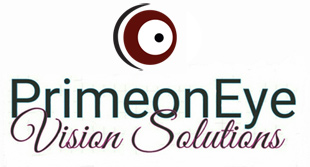What is Central Serous Choroidopathy?
Central Serous Choroidopathy (CSC), also known as Central Serous Retinopathy (CSR), is a disease that causes fluid build-up beneath the retina. This leakage of fluid comes from the layers under the retina, the retinal pigment epithelium (RPE) and choroid. This condition generally affects a person’s central vision.
Who is at risk?
While there is no definite known cause for this condition, it mainly affects young males between the ages of 20-45, although women may also be affected. Risk factors for the development of this condition include “type A personality”, use of steroids, use of caffeine or other stimulants (e.g., energy drinks, dietary supplements), smoking and a history of trauma, physical and emotional stress.
Diagnosis
Central serous can be diagnosed by examining the retina with special lenses allowing a view of the back of the eye. A blistering of the retina may be seen. Some cases are very subtle and additional testing is required. Fluorescein angiography will show a spot of leakage with accumulated into a classic “smoke-stack” pattern in some cases and may be used to identify complications including choroidal neovascularization. Indocyanine Green (ICG) angiography supports the role of the choroid in this disease and can be useful in management. We now use high resolution swept source optical coherence tomography (OCT) and OCT angiography to identify fluid under the retina and can identify subtle cases that might otherwise be missed.
Signs and Symptoms
Signs of central serous can include an elevation of the central retina (macula), deposits beneath the retina, dark and light color changes (hyper- and hypo-pigmentation), and, in complex cases, blood, fat deposits (lipid) and scarring (fibrosis). The “normal eye” often has subtle changes as well. Symptoms include blurred central vision, small image size (micropsia), and distortion of the image (metamorphosia). After central serous resolves, most patients will still have residual symptoms such as distortion, decreased color and contrast sensitivity, and vision difficulty at night. There is also a 40-50% change of recurrence over time. In some cases the long term complications may be due to residual chronic activity and a more detailed evaluation of the disease process may improve the visual results.
Treatments
While there is no known cure, treatment is directed at the underlying modifiable risk factors such as removal of stimulants from the diet (e.g., smoking, caffeine, energy drinks, steroids) and improved life style (e.g., increase in sleep reduction in stress). Normally this condition clears up in a month or two. In patients with more severe vision loss or a prolonged course of the disease, laser treatment has been shown to reduce the course of the disease and improve vision. We may consider treatment with a special laser (photodynamic therapy with Visudyne), intraocular injections of anti-VEGF drugs such Avastin, or a combination of these treatments. At Prime we specialize in latest testing and treatments of CSC and macula disorders.
Consult us for more advice and help.
